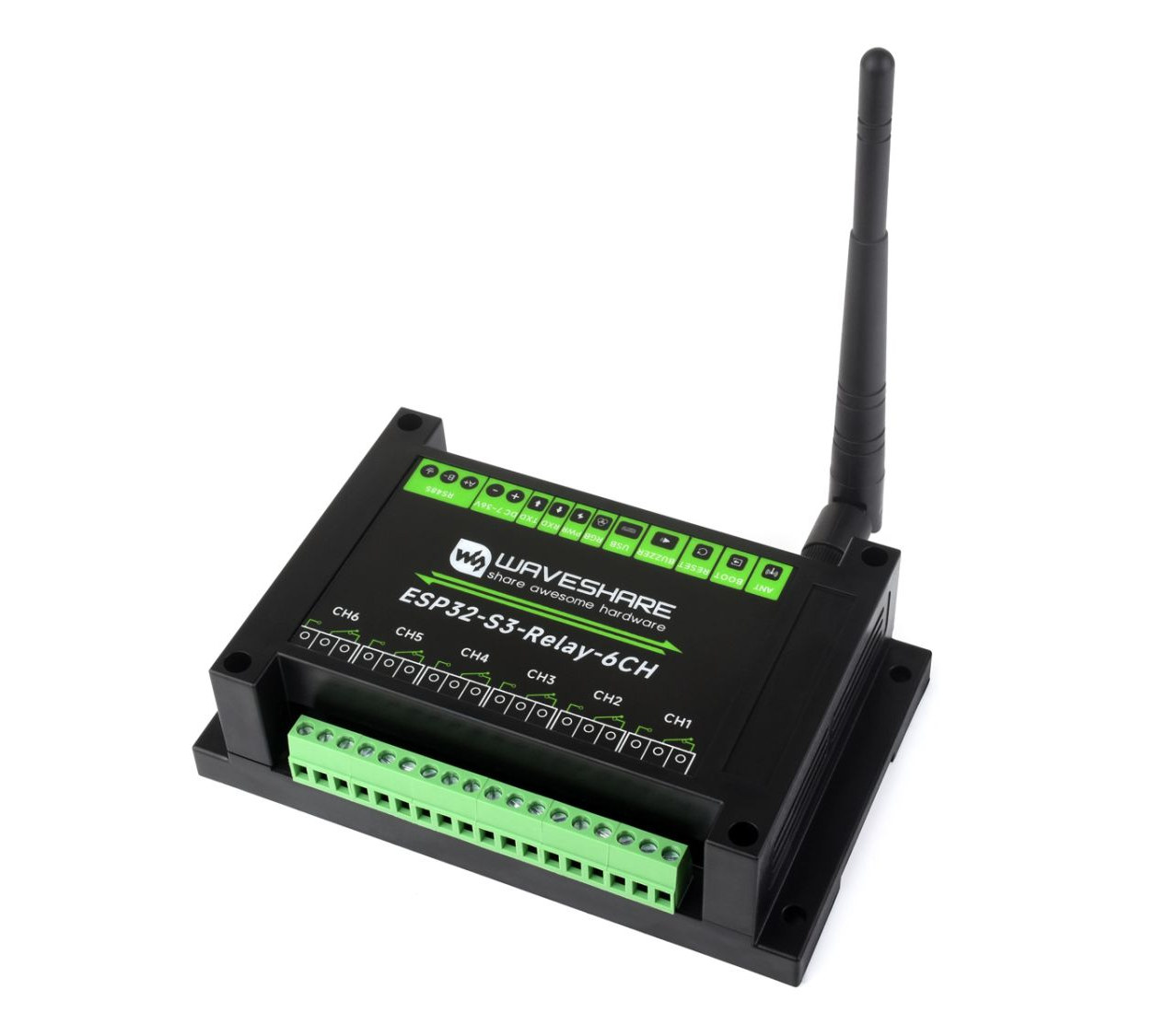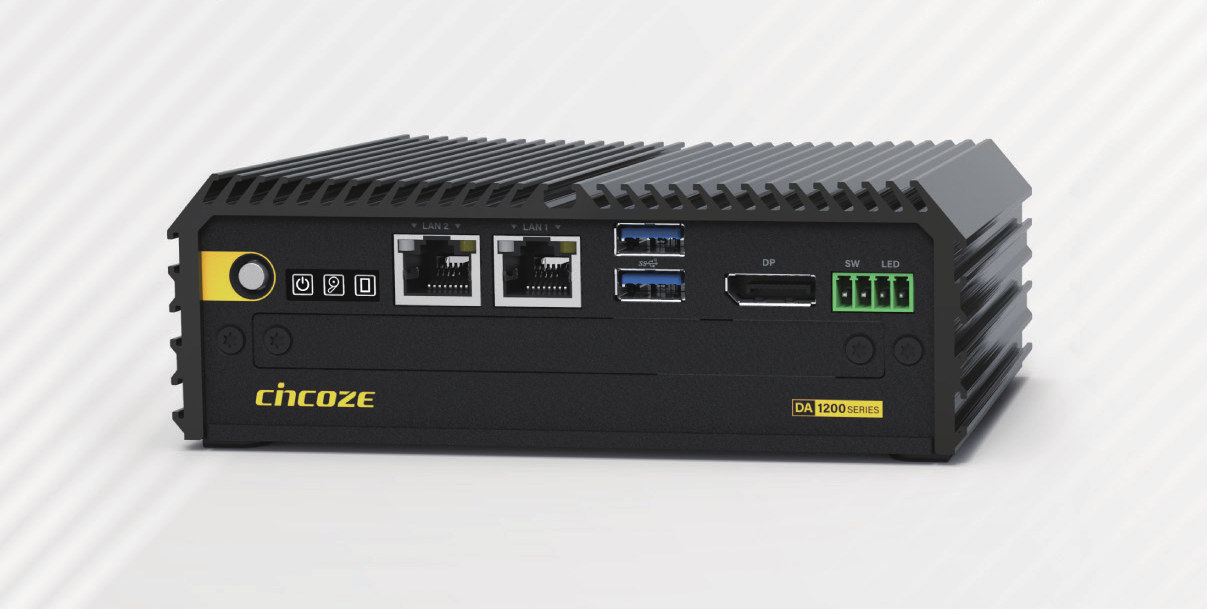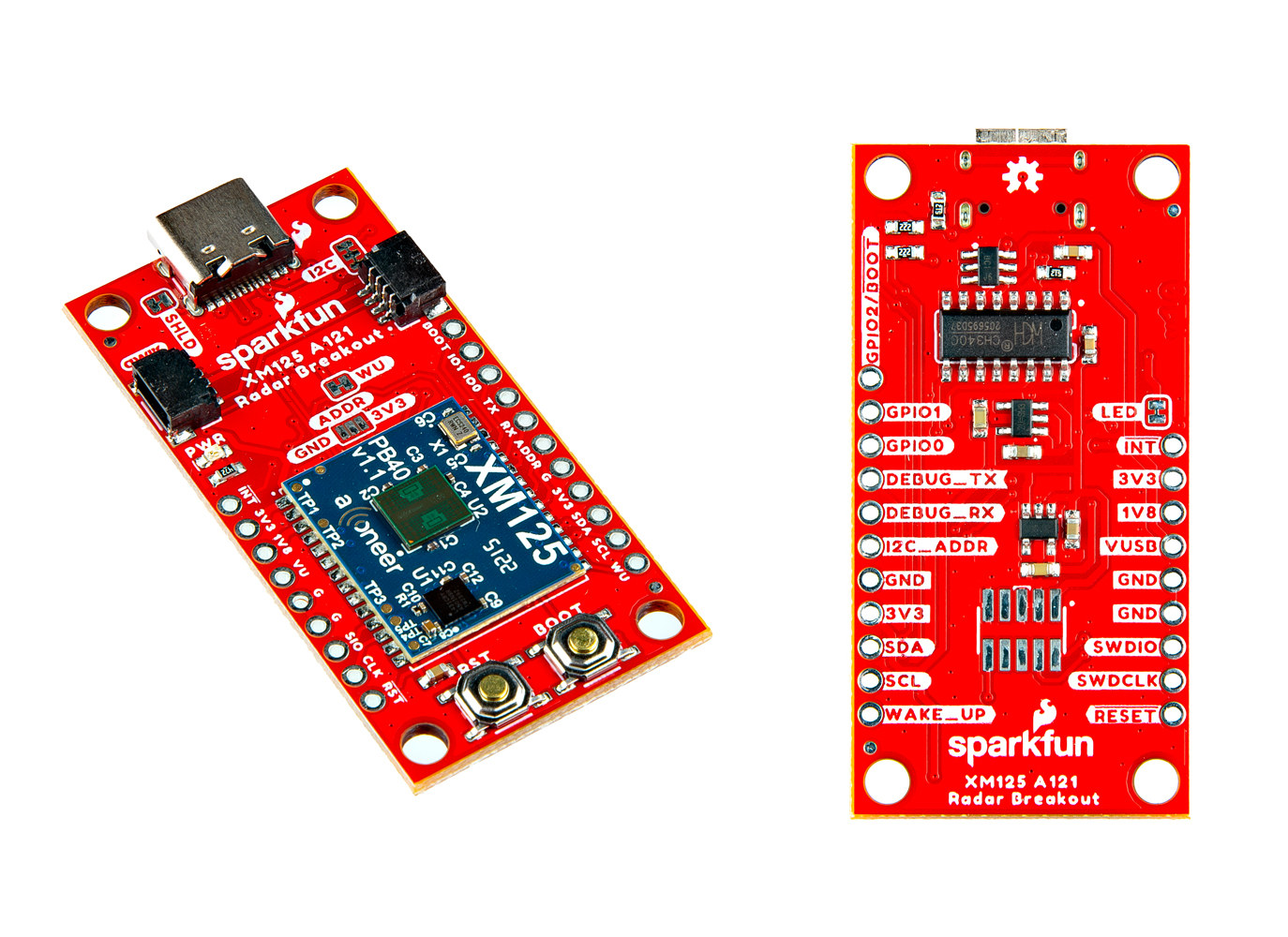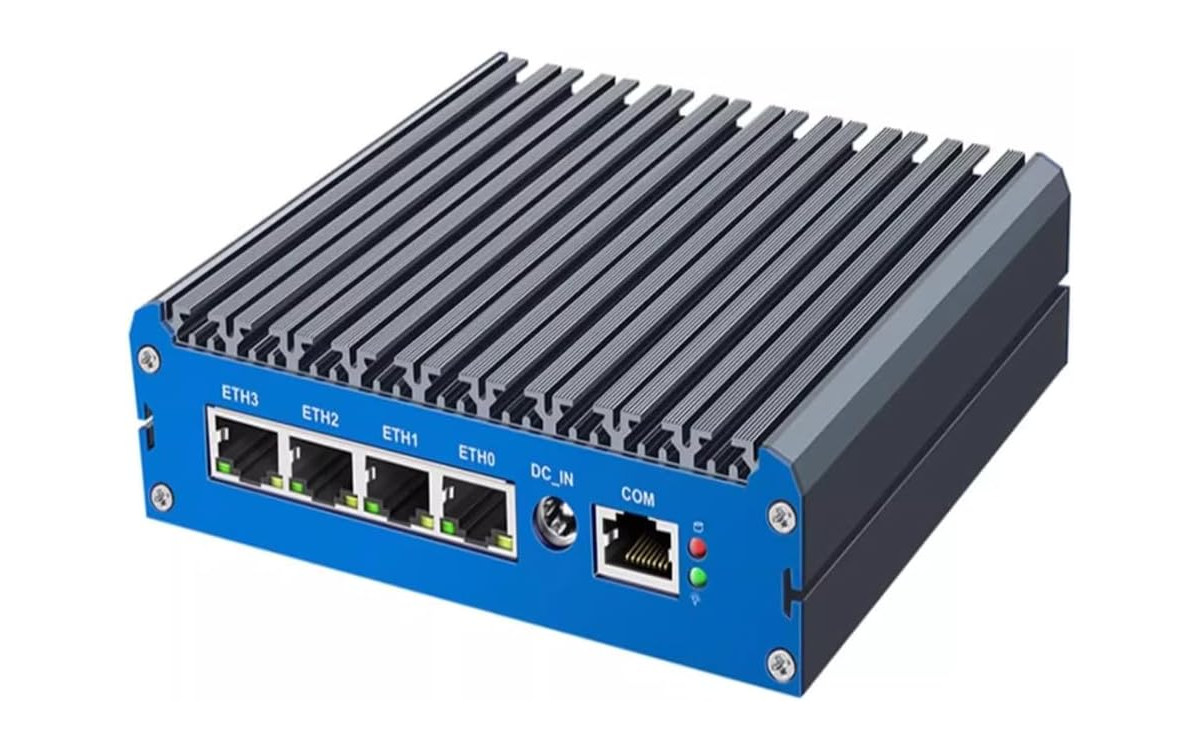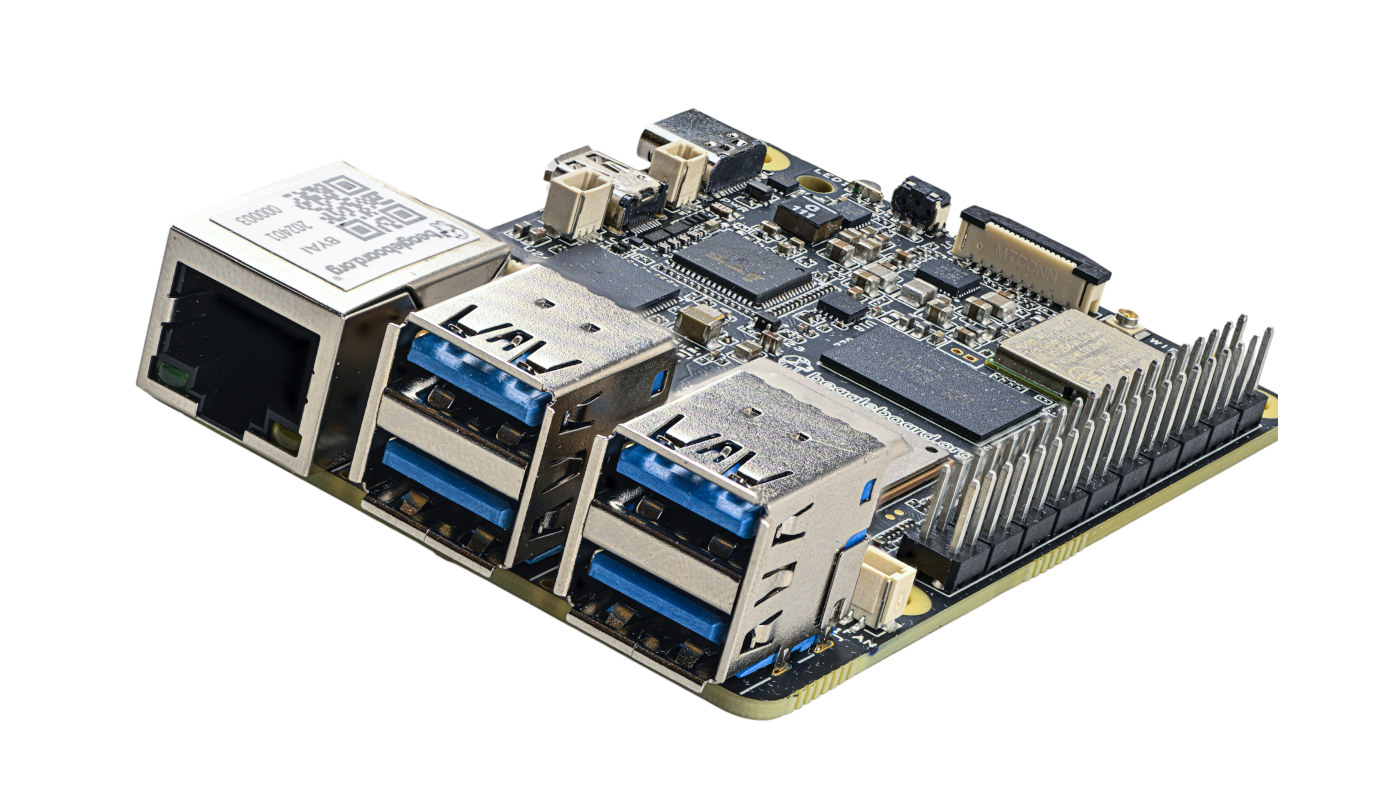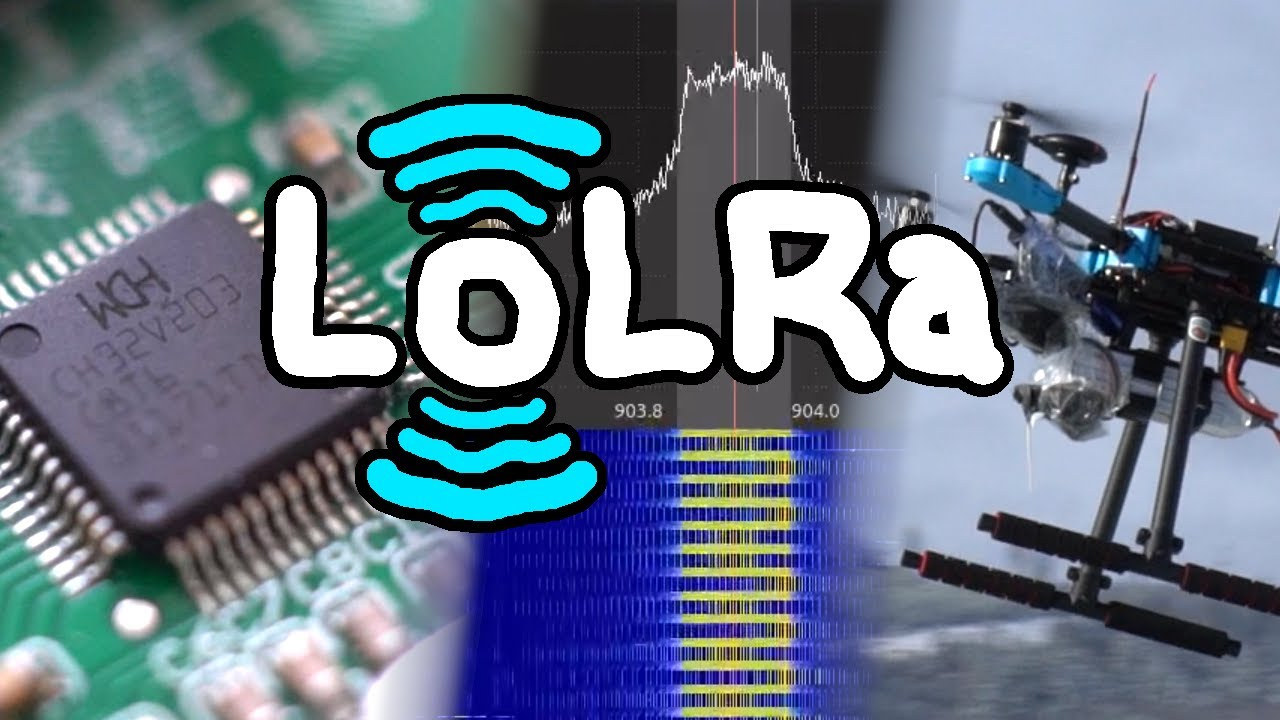Waveshare ESP32-S3-Relay-6CH is a 6-channel WiFi and Bluetooth relay module based on Espressif Systems ESP32-S3 wireless microcontroller that also supports RS485 control and comes with headers taking Raspberry Pi Pico HATs adding RTC, CAN Bus, RS232, LoRa, sensors, or other features. The relays are rated 250VAC/30VDC up to 10A, the system take 7V to 36V DC input through a terminal block, and can be programmed with Arduino or MicroPython though a USB-C port. It also features a a built-in buzzer, an RGB LED, and is housed in a DIN Rail-mountable ABS case. Waveshare ESP32-S3-Relay-6CH specifications: Wireless module – ESP32-S3-WROOM-1U-N8 by default MCU – ESP32-S3 dual-core Tensilica LX7 up to 240 MHz with 512KB SRAM Storage – 8MB Quad SPI flash Wireless – 2.4 GHz WiFi 4 and Bluetooth LE 5 u.FL connector for external antenna 6x relays via terminal blocks Rating – Up to 10A 250V AC / 30V DC […]
Cincoze DA-1200 fanless industrial embedded computer features Intel N97 CPU, operates in -40 to 70°C temperature range
Cincoze DA-1200 is a compact, fanless industrial embedded computer powered by an Intel Processor N97 Alder Lake-N CPU with up to 16GB DDR5, and equipped with M.2 Key-B sockets and 2.5-inch SATA slot for storage, dual 2.5GbE, optional WiFi and 5G connectivity, DisplayPort video output, and a CMI connector for expansion. Designed for challenging industrial environments, the mini PC works across a wide temperature range (-40 to 70°C) and wide voltage range (9 to 48V) and complies with the MIL-STD-810H shock and vibration standard, as well as various EMC/EMI standards such as EN IEC 61000-6-2 and EN IEC 61000-6-4. Cincoze DA-1200 specifications: SoC – Intel Processor N97 Alder Lake-N quad-core processor @ up to 3.6 GHz with 6MB cache, 24 EU Intel UHD graphics @ up to 1.20 GHz; TDP: 12W System Memory – Up to 16GB DDR5-4800 via SO-DIMM socket Storage M.2 SSD shared by M.2 Key B Type […]
Sparkfun’s Pulsed Coherent Radar Sensor features Acconeer XM125 60 GHz module, works through walls, offers up to 20-meter range
SparkFun has launched a new Qwiic breakout board for the Acconeer XM125 60 GHz pulsed coherent radar sensor that can measure distance to humans even through walls and works at a distance of up to 20 meters. We’ve seen tiny 24GHz or 60GHz radar modules for several years now, and Supachai even reviewed the Seeed Studio mmWave sensor using ESPHome and Home Assistant late last year with the solution relying on Frequency-Modulated Continuous Wave (FMCW) technology. The Acconneer XM125 is a Pulse-radar module that emits electromagnetic waves in short bursts instead of continuously like FMCW radars and allows longer measurement ranges potentially at the cost of lower accuracy. Sparkfun Pulse Coherent Radar Sensor specifications: Acconeer XM125 Module A121 60GHz Pulsed Coherent Radar (PCR) Integrated baseband, RF front-end, and antenna in package Detects distance, speed, motion, and objects up to 20 meters away Millimeter precise readings Low power consumption STMicro STM32L431CBY6 […]
INCTEL N100 fanless mini PC and micro firewall appliance comes with four 2.5GbE ports using Intel i226V controllers
INCTEL N100, also sold under the Partaker brand, is a fanless mini PC and “micro firewall appliance” powered by an Intel Processor N100 CPU and equipped with four 2.5GbE ports all using Intel i226V. It has features similar to the tiny, actively cooled iKOOLCORE R2 Alder Lake-N mini PC that combines Intel and RealTek controllers, but the INCTEL model has a larger yet thinner design. The device supports up to 16GB DDR5 memory, can take an M.2 NVMe SSD and/or a 2.5-inch SATA drive for storage, and also provides two video outputs through HDMI and DisplayPort, as well as a few USB ports, an RJ45 console port, and optional support for WiFi and 4G LTE connectivity. INCTEL N100 specifications: SoC- Intel Processor N100 quad-core Alder Lake N-series processor @ up to 3.4 GHz (Turbo) with 6MB cache, 24EU Intel UHD graphics @ up to 750 MHz; TDP: 6W System Memory […]
Fanless Raspberry Pi CM4 panel PC features 15.6-inch touchscreen display, supports 9V-36V wide input voltage
EDATEC ED-HMI2320-156C is a fanless panel PC powered by a Raspberry Pi CM4 module with 15.6-inch capacitive touchscreen display and a metal enclosure ensuring cooling that’s built upon the previous Compute Module 4 smart displays from the company such as the 10.1-inch EDATEC ED-HMI2020-101C industrial panel PC and the ED-HMI2120-101C adding features such as 4G LTE, RS232 and RS485, M.2 NVMe SSD. The company’s latest HMI solution comes with two mSATA sockets, a 4K-capable HDMI 2.1 output port, two Gigabit Ethernet ports, optional WiFi 5, Bluetooth 5, and 4G LTE connectivity, as well as a few USB ports and DB9 serial ports. It can operate in the -25°C to +60°C temperature range and takes 9V to 36V DC input. EDATEC ED-HMI2320-156C specifications: System-on-Module (SoM) – Raspberry Pi CM4 SoC – Broadcom BCM2711 CPU – Quad-core Cortex-A72 processor @ 1.5GHz GPU – VideoCore VI conformant with OpenGL ES 3.1 & Vulkan […]
Orange Pi Developer Conference 2024, upcoming Orange Pi SBCs and products
Orange Pi held a Developer Conference on March 24, 2024, in Shenzhen, China, and while I could not make it, the company provided photos of the event where people discussed upcoming boards and products, as well as software support for the Orange Pi SBCs. So I’ll go through some of the photos to check out what was discussed and what’s coming. While Orange Pi is mostly known for its development boards the company has also been working on consumer products including the Orange Health Watch D Pro and the OrangePi Neo handheld console. The Orange Pi Watch D Pro is said to implement non-invasive blood glucose monitoring, blood pressure monitoring, one-click “micro-physical examination” and other functions to to help users monitor their health monitoring. The Watch D Pro uses a technique that emits a green light to measure glucose levels in the blood, and we’re told it’s accurate enough to […]
BeagleY-AI SBC features TI AM67A vision processor with 4 TOPS AI accelerators
The BeagleBoard.org Foundation’s BeagleY-AI is an open-source hardware, credit card-sized SBC powered by a Texas Instruments AM67A quad-core Cortex-A53 vision processor with various programmable blocks capable of delivering up to 4 TOPS for AI algorithms. The board ships with 4GB RAM, relies on a microSD card slot for storage and OS booting, implements gigabit Ethernet, WiFi 6, and Bluetooth 5.4 connectivity, and can drive up to three displays via micro HDMI, OLDI (LVDS), and MIPI DSI interfaces. The BeagleY-AI also comes with two MIPI CSI camera interfaces, four USB 3.0 ports, a USB Type-C port, and a 40-pin GPIO header for expansion. We can also see a 16-pin PCIe FPC connector that looks somewhat similar to the 20-pin PCIe connector on the Raspberry Pi 5 but officially supports PCIe Gen3 x1. BeagleY-AI specifications: SoC – Texas Instruments AM67A (J722S) “vision processor” CPU Quad-core 64-bit Arm Cortex-A53 processor at 1.4GHz Arm […]
LoLRa project – Transmitting LoRa packets without radio using CH32V003, ESP8266, or ESP32-S2 MCU
The LoLRa project is a firmware-only LoRa transmission open-source project that works without a Semtech radio and instead relies on an I2S or SPI interface (so not exactly bit-banging) to transmit data with microcontrollers such as WCH CH32V003, or Espressif Systems ESP8266 and ESP32-S2 microcontrollers. LoRa is a proprietary protocol by Semtech, but people have been trying to reverse-engineer the LoRa PHY for years, and this culminated with a LoRa GNU Radio SDR implementation last year. But CNLohr found out you don’t even need a radio to send LoRa packets and you can instead use SPI or I2S interfaces from general-purpose microcontrollers to send packets that can be decoded by commercial off-the-shelf LoRa gateways and other chips. The current implementation is designed for the ITU Region 2 (aka The Americas) targeting the 902-928MHz frequency band, but the code could be changed for Region 1 (EU, Russia, Africa) to target 863-870MHz […]


